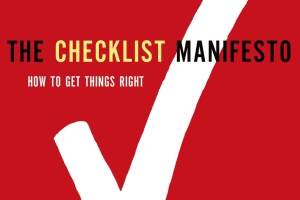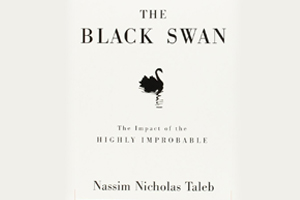Written by a Stanford University graduate, I Will Teach You to Be Rich espouses a practical approach towards financial well-being, delivered in a style that is informative and engaging. In his book, Ramit Sethi highlights that financial well-being primarily rests on the four pillars of personal finance, namely, banking, saving, budgeting, and investing. He offers a number of innovative ideas on wealth-building through personal entrepreneurship. He also guides readers on automating finance and adopting a plan which enables people to make money even while sleeping. Indeed, the book is about how to earn more, save more, and enjoy the rich life. Sethi has extensive practical experience in the financial sector and is the founder and CEO of GrowthLab, a venture which enables entrepreneurs to initiate and grow online businesses.
Key Takeaways
- No one but ‘you’ is responsible for your financial problems.
- It is more important to get started than to become an expert – also known as the 85% rule.
- Start your investment journey today, no matter how little money you have.
- Understand and accept that it is okay to make mistakes in your financial journey.
- Realize that ordinary actions will only get you ordinary results; extraordinary steps are required for stupendous outcomes.
- Create a financial system where you spend extravagantly on buying things you love but cut costs in areas which do not interest you. This theory is also known as conscious spending.
- Remember, there’s a limit to how much you can cut your expenses. But, there is no limit to how much you can earn.
- Figure out how much money you earn and then automatically direct it to the different spending avenues, including savings accounts and investment options.
- Devise a financial system which works for you and once its set up, do not fiddle with it too much.
- While deciding on your financial goals and plans, play offense instead of being on the defense.
- Use your hard-earned money to design your rich life.
There is no doubt that the different aspects of financial well-being can put you on a stressful path. Due to the lack of financial know how, people often fail to transition from the middle class to the rich category, spending their life in a less than optimal manner. The term investment makes people wary as they fear losing money due to market risks and convince themselves that losing money now is better than losing money later. Because of this mindset, many people spend everything that they earn and fail to save for their future. This forces them to remain employed all their lives, or live out their old age in a dire state. This lack of financial freedom should be done away with by beginning the investment journey at a young age. Indeed, the younger a person is, the more risk they can take, making it the ideal age to embark on their financial wellness voyage.
The six-week plan
It is possible to gain financial fitness in just six weeks, by focusing on the following steps:
- Manage your credit: Credit should be used wisely, especially while buying high-value items which cannot be afforded in ready cash. Avoid spending more than you earn and learn to use credit as an interest-free loan by paying off your bills on time.
- Optimize your bank accounts: Optimizing your bank accounts involves picking the best banks and accounts, limiting bank fees, and maximizing bank interest.
- Prepare to invest: Now it is time to move on to investments. Focus on growing your money and on retirement planning.
- Apply conscious spending: In the fourth week of the six-week plan, practice and then adopt conscious spending by lavishing money on things you love while cutting costs elsewhere.
- Automate money transfers: The fifth week should revolve around automating your money transfers to avoid wasting time or spending over your limit.
- Know what to invest and how: Finally, in the last week, figure out how and where you wish to invest by analyzing all your options and deciding wisely on the plan of action.
The six-week plan forms 85% of your financial wellness journey while the rest is all about maintaining your investments. This can be done by:
- Keeping a check on your investing and rebalancing your funds in response to change in circumstances or the market environment. Further, if you choose to invest in index funds then you should consider rebalancing every 12-18 months.
- Achieving your targeted percentage of conscious spending and building your investment portfolio is not an overnight process. It needs to be built gradually over time. You should treat the first 6 weeks as setting the stage. They are like the platform from which you can take-off. However, you will still need time to achieve your financial goals.
- Having a rich life is not just about acquiring more money. In fact, it goes beyond just money. While money can give us freedom to do what we love and give back to others, you can’t just focus on growing your wealth. By having a conscious spending plan and establishing a system that can help you automate your savings and investments, you can spend on things that matter the most to you and still achieve your financial goals.
Begin by taking responsibility
The most important thing is to begin your financial planning journey and accept that it is okay to make a few mistakes along the way. Also, understand that often it may take a while before the results of your investment are visible. Patience is a virtue in the investment ecosystem and you should always believe in the power of compound interest. Everyone wishes to be rich but no one works for it. Now is the time to stop making excuses and begin taking responsibility for your personal financial wellbeing. This is the first step on the road to becoming rich.
Create a conscious spending plan
It is not wise to remain dependent on your salary for your spending needs throughout your life. Similarly, it is a waste of time to sit down each month and calculate how much you should be spending on your requirements. It is better to be prepared with a list of routine expenses which can then be automated to save precious time. Taking fixed chunks from your monthly salary and automatically spending them on the consciously pre-decided expenses is the first step towards a conscious spending plan. Choosing the right things to spend on is a personal matter – everyone should spend extravagantly on the things they like while limiting expenditure on things which do not interest them.
There should also be a fixed amount earmarked for routine expenses such as rent, utilities, food, and credit card bills. An example of salary allocation in the early days of the career can be setting aside 60% for fixed and monthly expenses, investing 10% on retirement planning, stocks and bonds, etc., and saving another 10% for vacations and unexpected costs. The remaining 20% can be spent on whatever you like, without you having to worry about not spending wisely. Such a plan, created consciously, helps you avoid over-spending while also enabling you to enjoy the amount you spend. Further, making sure that these processes are automated will help you streamline your finances better. For instance, the 10%, or whatever portion you wish to save, can be automatically deducted once your salary comes in, taking the onus of investment off your plate. This also ensures that you do not end up, accidentally or otherwise, dipping into the portion you have set aside for your savings and investments.
Start your investment process right away
Many people spend years debating whether or not they should invest and then, once they decide, they spend more time wondering which avenue would suit them the most. This time spent in deliberation is a waste of investment opportunity and one should never underestimate the power of compound interest. It is imperative that you start investing, right now! The process is hard – from making up your mind to choosing the best options, it is a difficult task but then, it is the only way to become rich. And, if you do not start right away, you will regret each day that you lost when you are old. So, begin today by reading books, talking to knowledgeable people, and educating yourself as much as possible. And, do not wait to begin investing. You can always start small and increase your investments in line with your increase in income.
Being rich involves more than merely acquiring money. It also involves investing wisely and enjoying financial freedom, especially in your later years. The six-week plan, and the adroit maintenance of your investment post the six-week target, will put you on the path to richness and help you achieve all your goals while enjoying the rich life.
Sethi’s book packs in a treasure of realistic financial planning advice that is easy to follow. One of the most important takeaways from the book is the importance of automating your spending and investments. Humans are inherently biased and influenced by a host of emotions stemming from greed and fear. These emotions can sometimes nudge you towards incorrect investment decisions. Automating investments ensures that you continue to invest in a disciplined manner and remove biases from the investment decision making process. From that perspective, a great way of automating investment is to invest in mutual funds through the Systematic Investment Plan (SIP) route. SIPs allow you to invest a fixed amount of money in a mutual fund scheme of your choice at time intervals that suit you best. This means that you can choose to invest fortnightly, monthly, or even quarterly. Further, in accordance with Sethi’s advice, you can even start your SIP investments with as little as Rs. 500. While following the advice laid out in the book is easy, doing it via the SIP route is even easier.
An investor education initiative by Edelweiss Mutual Fund
All Mutual Fund Investors have to go through a onetime KYC process. Investor should deal only with Registered Mutual Fund (RMF). For more info on KYC, RMF and procedure to lodge/redress any complaints, visit -https://www.edelweissmf.com/kyc-norms
MUTUAL FUND INVESTMENTS ARE SUBJECT TO MARKET RISKS,READ ALL SCHEME RELATED DOCUMENTS CAREFULLY.
Trending Books
MUTUAL FUND INVESTMENTS ARE SUBJECT TO MARKET RISKS, READ ALL SCHEME RELATED DOCUMENTS CAREFULLY.













